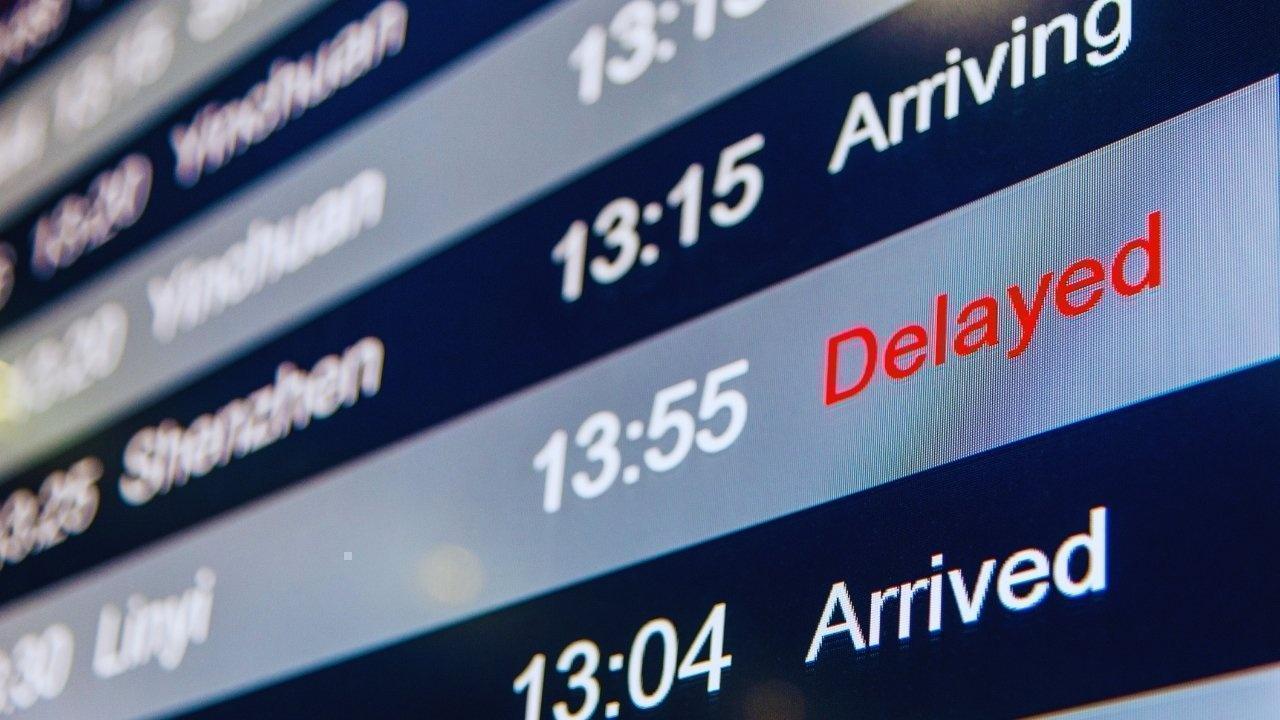
Join 10k+ people to get notified about new posts, news and tips.
Do not worry we don't spam!

Post by : Anis Farhan
Travel in 2025 carries new caveats: demand is back but the systems behind it sometimes lag. From shortages in air‑traffic staffing to sudden weather events and congested air corridors, buying a ticket no longer promises a smooth journey. Many passengers now budget for delays as likely, not rare.
If you have a mission‑critical trip — business in Dubai, family visits or relocation — it pays to know which airports and routes are most prone to disruption. Combined with real‑time tracking and contingency planning, that awareness can save time and stress. Below we map trouble spots, explain how to use live trackers effectively, and suggest smarter route and backup options.
Start by spotting higher‑risk locations. Recent analyses point to several U.S. airports and corridor pairs that repeatedly post high delay and cancellation figures.
One study recorded Baltimore/Washington International Airport (BWI) with roughly a 38.9% delay rate during a recent summer window. The Manual
Chicago Midway International Airport (MDW) showed a comparable figure of about 38.1% delays. The Manual
Analysis finds Ronald Reagan Washington National Airport (DCA) saw disruption levels above 40% in a February period. Time Out Worldwide
Seasonal reports note Newark (EWR), LaGuardia (LGA) and San Francisco (SFO) struggle with weather, congestion or ageing infrastructure. Simple Flying+2Squaremouth Travel Insurance+2
Apart from airport totals, some flight pairs stand out. For instance, the Orlando (MCO) to Philadelphia (PHL) lane was flagged for average delays near 35 minutes in one analysis. Daily Express US
Multiple causes combine to raise risk on these routes and fields:
Weather sensitivity: Coastal fog at SFO, winter de‑icing hold‑ups at EWR and LGA, and severe storm impacts at hubs like ATL. Simple Flying+1
Air‑traffic control staffing gaps: The FAA has acknowledged controller shortages that contribute to mounting delays. Reuters+1
High congestion and older infrastructure: Busy airports with legacy taxiways and runways are less flexible when problems arise.
Late inbound aircraft: When an incoming aircraft is delayed, subsequent departures inherit that lag, creating cascading disruption.
If you cannot avoid a risk zone, live tracking and timely monitoring are your best defence. Here’s how to put those tools to work.
Services like FlightAware deliver live status, cancellation notices, and visual 'MiseryMap' views. Use their filters to watch origin/destination, airline, and to get alerts when your route shows trouble. flightaware.com
Enter your itinerary or airport and set thresholds (e.g., delay > 30 minutes or cancellation risk > 5%) to receive push notifications. That lets you pivot—switch flights or carriers—before you reach the terminal.
Weather forecasts and air‑traffic advisories often flag problems early. Keep tabs on storm tracks, airspace constraints, and FAA staffing notices for early decision points.
Early morning flights usually face fewer knock‑on delays because aircraft are less likely to have been held up by prior late arrivals. Use first departures as a reliability baseline.
If your origin shows high delay levels, compare statistics for neighbouring fields. An alternate airport even a short drive away can be substantially more reliable.
Dodging risky routes doesn’t always mean cancelling travel; it means planning with purpose. Consider these options:
Choose smaller or suburban airports with fewer daily movements — they often deliver steadier on‑time records, even if fares are slightly higher.
Mid‑day and afternoon flights can suffer from ripple effects; very early or late services can be safer bets depending on the airport’s schedule dynamics.
For short to medium hops (Europe, India, U.S. Northeast Corridor), take a train for the first leg and fly from a less congested hub to lower risk exposure.
Some airlines handle disruptions better than others. In 2025 U.S. data suggested smaller carriers such as Hawaiian tended to post stronger punctuality than several legacy network operators. Simple Flying
Add cushion time for connections or arrive a day earlier if schedules are tight; that extra margin can prevent missed meetings and costly knock‑on effects.
Recent incidents illustrate how a single issue can ripple widely:
At Newark one carrier cut 35 daily round‑trips in early 2025 citing FAA staffing and runway work. People.com
In Chicago O’Hare a weather front produced over 500 delays and 74 cancellations in a single day across multiple carriers. Travel And Tour World
These events show that even major hubs can be felled by one operational shock — a sobering reality for travellers on tight timetables.
Knowing risk zones and trackers is useful, but actions at booking and check‑in make the difference. Consider:
Choose early departures: First flights of the day reduce exposure to cascading delays.
Avoid tight connections: Build extra transfer time at busy hubs.
Prefer direct flights: Fewer legs cut the number of potential failure points.
Monitor closely in the 24 hours before departure and enable alerts from tracking apps.
Plan a backup: Know alternative airports, later flights or surface options ahead of time.
Pack essentials in carry‑on: Chargers, toiletries and a change of clothes ease overnight disruptions.
Stay flexible on seats: Some airlines allow free changes close to departure, letting you move to more reliable services.
International itineraries bring extra variables — airspace closures, reroutes and third‑party service breakdowns. Recent examples include:
Major European hubs — LHR, AMS and CDG — at times reported hundreds of cancellations and delays during periods of operational strain. Travel And Tour World
Geopolitical events can close airspace and dramatically extend routing; one Indian carrier rerouted flights after a Pakistani air‑space closure. The Economic Times
For overseas travel:
Monitor regional hubs and airspace alerts in addition to your departure and arrival airports.
Use global tracker apps that surface cross‑border disruptions.
Consider splitting long‑haul trips into segments to reduce single‑leg exposure.
Confirm travel insurance covers delays and reroutes tied to airspace or operational problems.
The old rule of “book early and expect the best” no longer guarantees a seamless trip. Certain airports and corridors now carry heightened delay risk; without live‑tracking and contingency plans even a well‑paid ticket can mean long waits.
By spotting high‑risk nodes, using real‑time tools, picking smarter routes, and building time buffers, Dubai travellers can reduce the chances of a travel meltdown and handle disruptions more calmly when they happen.
This piece is for information only and cannot promise specific flight outcomes. Delay rates and route performance depend on airline, season, weather and operational factors. Consult airlines, airports and live trackers when planning trips.










India Wins First Women’s World Cup 2025 Title
India lifts its maiden Women’s World Cup 2025 title! Harmanpreet Kaur’s team stuns South Africa in a

Manuel Frederick, 1972 Olympic Bronze Goalkeeper, Dies at 78
Manuel Frederick, a member of India’s 1972 Olympic bronze hockey team, has died in Bengaluru at 78 a

Muhammad Hamza Raja Wins IFBB Pro Card Puts Pakistan & UAE on Global Stage
Pakistani bodybuilder Muhammad Hamza Raja earns IFBB Pro Card in Czech Republic, showcasing Dubai’s

Shreyas Iyer’s Recovery Underway After Spleen Laceration in Sydney ODI
Shreyas Iyer is recovering after a spleen laceration sustained while taking a catch in the Sydney OD

Qatar Ready to Host FIFA U-17 World Cup 2025 in Aspire
Qatar confirms full readiness to host the FIFA U-17 World Cup 2025 from November 3–27, with world-cl

Wolvaardt’s 169 Sends South Africa Into Women’s World Cup Final
Laura Wolvaardt’s 169 powered South Africa to a 125-run semi-final win over England, booking a place